Are you an outdoor lover who loves to explore forest floors looking for unique pets to catch? Then I got some exciting news for you. There’s a wonderful pet you could get.
Did you know that salamanders, the small amphibians with their long bodies, four legs, and sometimes even a pair of tiny flaps on either side of their heads – yes those slimy little guys – are actually quite common in many places around the world?
Yes, Salamanders are found in a variety of environments across the globe. These fascinating creatures can be found in forests, wetlands, and even desert areas.
To make things further interesting, we’re going to tell you all about these friendly Salamanders’ habitats. So, be prepared to be amazed as we travel across habitats near and far together unlocking the mysteries of this curious creature.
Do Salamanders Live In Water or On Land?
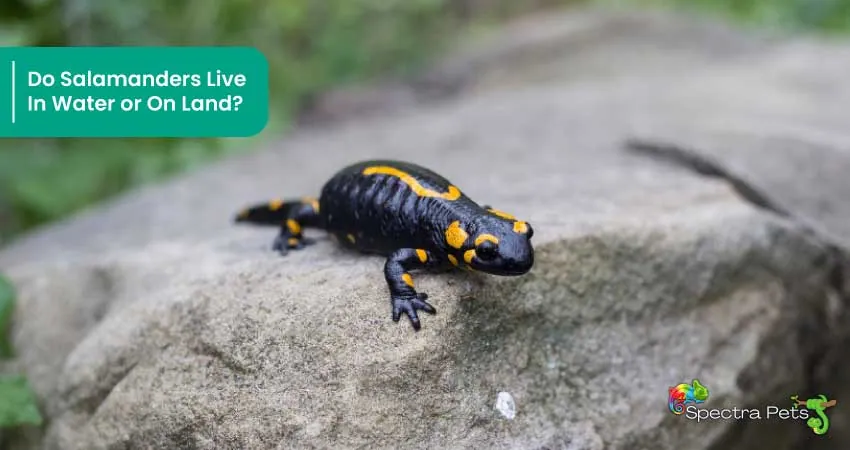
Salamanders are adapted to living in damp, humid environments, and they are often found near water sources or in areas with high humidity. However, some species of salamanders, such as desert-dwelling salamanders, are adapted to living in dry, arid environments, and they may spend most of their time on land.
These creatures are amphibians, which means that they are adapted to living both on land and in water. Most species of salamander spend at least part of their life cycle in water, and many species are fully aquatic as adults.
For example, many species of salamanders start their lives as eggs that are laid in water. These eggs hatch into aquatic larvae, which have gills and other adaptations for life in the water. As the larvae grow, they undergo metamorphosis, during which they transform into adult salamanders with lungs and other adaptations for life on land.
After metamorphosis, many species of salamander spend most of their time on land, returning to the water only to breed or in times of drought. Other species, such as newts, may spend most of their adult lives in the water but return to land to breed
What Biomes Do Salamanders Live In?
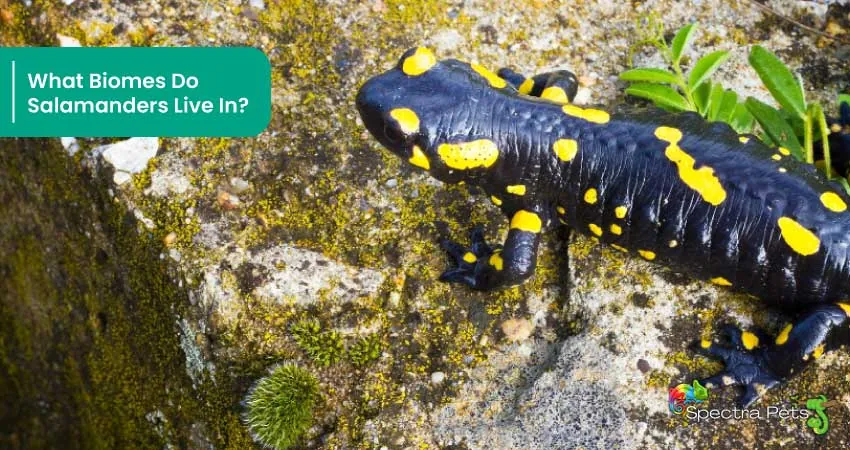
These amphibians are found in a variety of biomes across the globe, including forests, wetlands, and deserts. Here’s a closer look at each of these biomes and the types of salamanders that can be found in them:
Forests
Forest-dwelling salamanders can be found in a variety of forested areas, including deciduous forests, coniferous forests, and rainforests. These salamanders are typically found in damp, shaded areas, such as under logs or rocks, or in damp leaf litter.
These creatures are adapted to living in damp, shaded environments, and they are often found in areas with high humidity. These salamanders are typically small, with smooth or slightly warty skin and short legs. They may have bright colors or patterns on their skin, which can help them blend in with their surroundings and avoid predators.
These amphibians are important members of the forest ecosystem, serving as both predators and prey for other species. They typically feed on small insects and other invertebrates, and they may also eat worms, snails, and other small animals.
In addition to their role in the forest ecosystem, forest-dwelling salamanders are also important indicators of the health of the forest. Because they are sensitive to environmental changes, the presence or absence of certain species of forest-dwelling salamanders can provide insight into the overall health of the forest.
Some examples of forest-dwelling salamanders include the red-backed salamander and the spotted salamander.
Wetlands
Wetland-dwelling salamanders can be found in a variety of wetland habitats, namely swamps, marshes, and bogs. These salamanders are typically found in or near water, and they are often adapted to life in or around water. Some of these creatures are even fully aquatic, like the axolotl, for example.
Similar to salamanders in the forest, wetlands salamanders are adapted to living in moist, damp environments and are frequently found in locations with high humidity levels. Their anatomy and biology are also somewhat similar to those of the forest-dwelling ones.
Some examples of wetland-dwelling salamanders include the red-spotted newt, the axolotl, and the eastern newt.
Deserts
Desert-dwelling salamanders are a less common type of salamander, but they can be found in some arid regions of the world. These salamanders are adapted to living in dry, hot environments, and they are often found in underground burrows or in damp crevices.
These amphibians are adapted to living in dry, arid environments, and they have a number of adaptations that allow them to survive in these harsh conditions. For example, they may have thick skin or scales that help protect them from the sun and heat, and they may also burrow underground to escape the heat of the day.
Some examples of desert-dwelling salamanders include the Mexican salamander and the desert slender salamander.
In addition to these biomes, salamanders can also be found in a variety of other environments, including grasslands, meadows, and even urban areas. Wherever their habitat is, salamanders play an important role in the ecosystems they inhabit, serving as both predators and prey for other species.
In Which Parts Of the World Are Salamanders Commonly Found?

Salamanders are found on every continent except Antarctica. They are most commonly found in the Northern Hemisphere, particularly in North America, Europe, and Asia.
In North America, salamanders are found in a variety of habitats, including forests, wetlands, and grasslands. They are also found at a variety of elevations, from lowland forests to high mountain ranges.
In Europe, salamanders are found in a range of habitats, including forests, meadows, and wetlands.
In Asia, salamanders are found in a variety of habitats, including forests, grasslands, and wetlands.
What Time Of Year Do Salamanders Come Out?
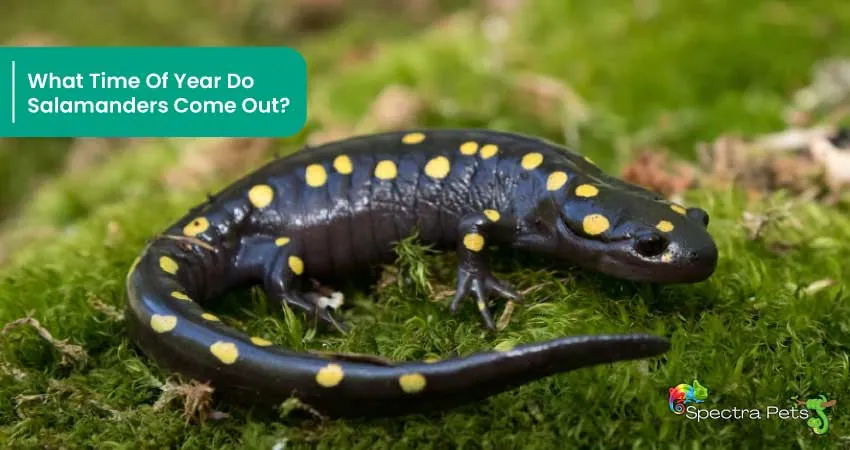
The specific time of year that salamanders are most active can vary depending on the species, the location, and the local climate. Normally, salamanders are most active during the warmer months of the year, when the weather is more favorable for foraging and mating. In many parts of the world, salamanders are most active from late spring to early fall, although some species may be active year-round in areas with mild climates.
The activity of salamanders is also influenced by other factors, such as the availability of food and moisture. In some cases, salamanders may become more active after a rainstorm, when the ground is moist and there are more insects and other small invertebrates available to eat.
Where Can I Find A Salamander In My Yard?
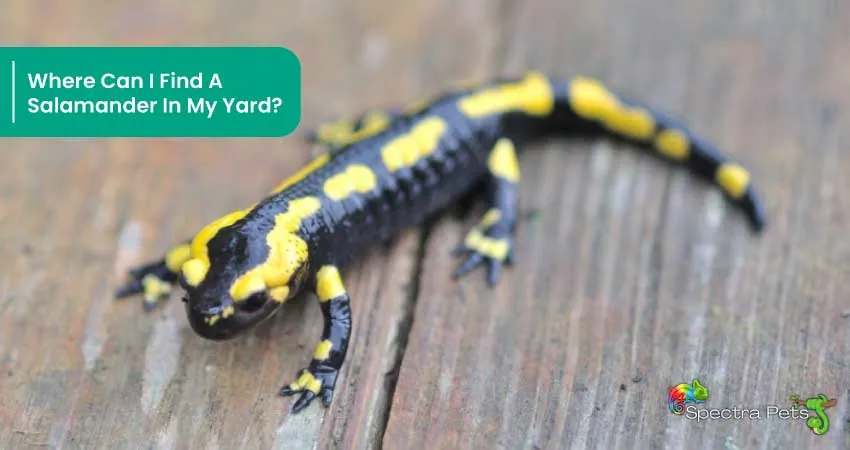
It is possible to find salamanders in your yard if you live in an area where salamanders are native and the habitat is suitable for them. Some common places to look for salamanders in your yard include:
Near Water Sources
Salamanders need moist environments to survive, so they are often found near streams, ponds, or other sources of water.
Under Debris
Salamanders may take shelter under logs, rocks, or leaf litter during the day to escape the heat and dry conditions.
In Moist, Shaded Areas
Look for salamanders in areas of your yard that are moist and shaded, such as near the base of trees or in damp garden beds.
In Gardens Or Landscaped Areas
Some species of salamanders may be attracted to gardens or landscaped areas that provide a suitable habitat, such as moist soil and plenty of hiding places.
It is important to remember that it is illegal to capture or keep wild salamanders as pets in many areas, so it is best to observe them from a distance and allow them to live in their natural habitat.
When Can You Find A Wild Salamander?
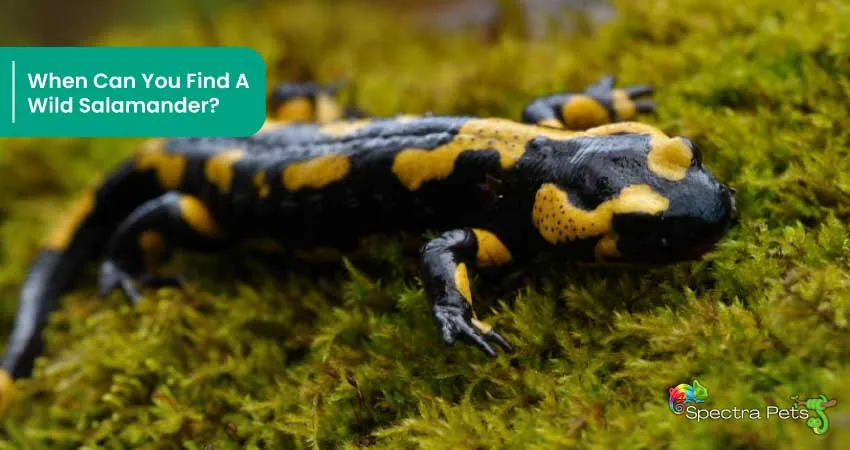
Salamanders are generally most active at night, so you will have an easier time spotting them during the evening or early morning hours. Some species of salamanders are also active during the day, particularly on cloudy or overcast days when the weather is cooler and more humid.
It is also possible to find salamanders at any time of the day if they are in an environment where they are easy to observe, such as in a terrarium or in a pond where they can be seen swimming on the surface.
Where Do Salamanders Hide During The Day?
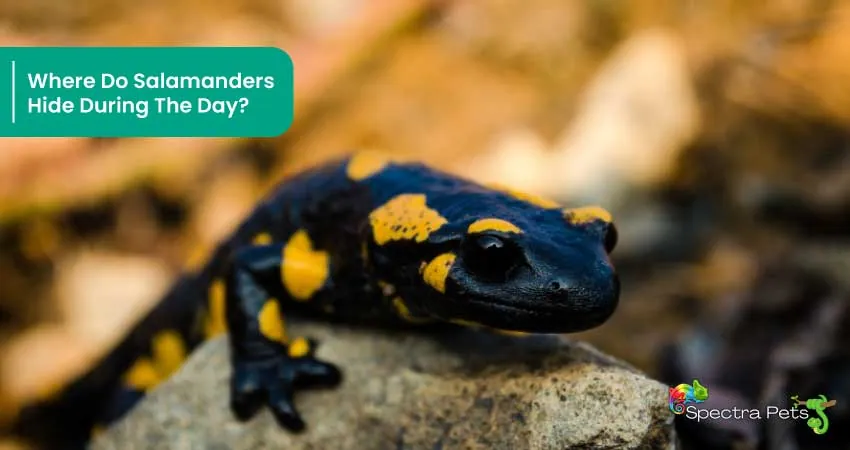
Salamanders are often found hiding in moist, cool, and shaded places during the day. Usually, you will be able to locate them under logs, rocks, leaf litter, or other debris in their natural habitat. Some species of salamanders may also burrow underground or take shelter in crevices or burrows to escape the heat and dry conditions of the day.
In areas where salamanders are common, you can easily find them hiding under objects or in small crevices in the ground.
When searching for salamanders, it can be helpful to look for these types of hiding places, particularly in moist, shaded areas near water sources.
Where Do Salamanders Sleep?
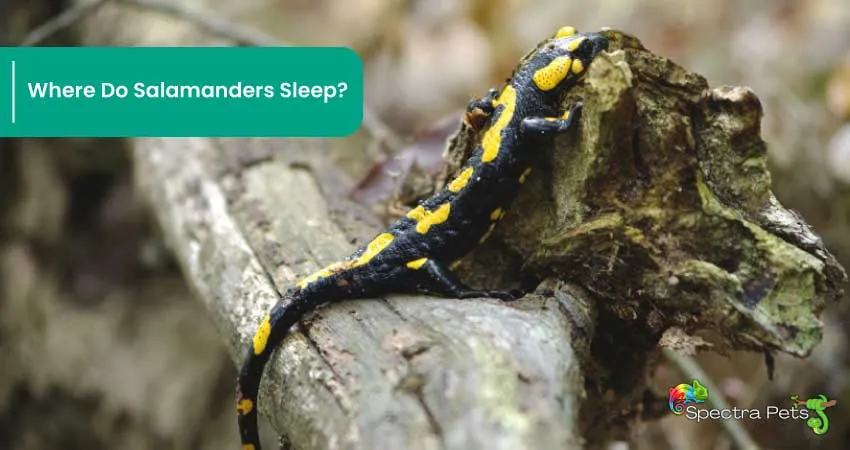
Salamanders do not have a set sleep schedule like humans do, and they do not sleep in the same way that humans do. Salamanders are generally most active at night, so they may be more likely to rest during the day. Some species of salamanders are active during the day as well, particularly on cloudy or overcast days when the weather is cooler and more humid.
When not actively foraging or mating, salamanders may rest in a variety of places, depending on their habitat and the specific needs of the species.
What To Do If You Find A Salamander

If you find a salamander in the wild, it’s important to remember that these creatures are an important part of the ecosystem and should be treated with respect.
Here are a few tips for what to do if you find a salamander:
Observe from a distance: If you come across a salamander in the wild, it’s important to respect the animal’s space and observe it from a distance. Do not try to handle or pick up the salamander, as this can cause stress to the animal and may even harm it.
Leave the salamander where you found it: Unless the salamander is in immediate danger, it’s best to leave it where you found it. Salamanders play an important role in their ecosystem, and disturbing or removing them can have negative impacts on the local environment.
Avoid disturbing its habitat: If you are in an area where salamanders live, it’s important to be mindful of your impact on the environment. Avoid trampling or disturbing the salamander’s habitat, and take care not to leave any trash behind.
Learn more about salamanders: If you are interested in salamanders, there are many ways to learn more about these fascinating creatures. You can read about them in books or online, visit a local nature center or museum, or join a local conservation group.
By following these simple tips, you can help protect salamanders and other wildlife in the wild.
Wrapping Up
Salamanders have been living on this planet for more than 164 million years and, even though their habitats are changing, they are still thriving. Every one of them is unique, with different colors, shapes, sizes, and diets.
By learning about the different species that exist and where they live, we become more aware of the diversity of these amazing creatures. Also, learning more about salamanders can be beneficial to both them and us. Hopefully, this article has enlightened you about these amazing buddies.
